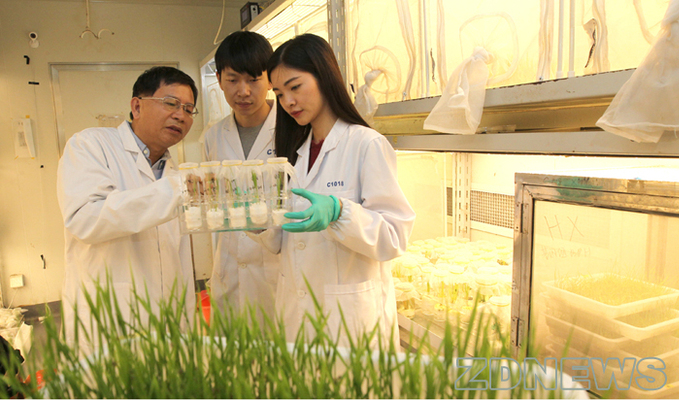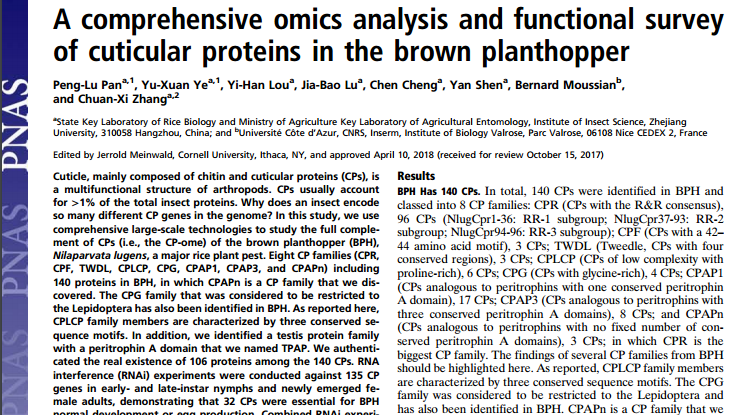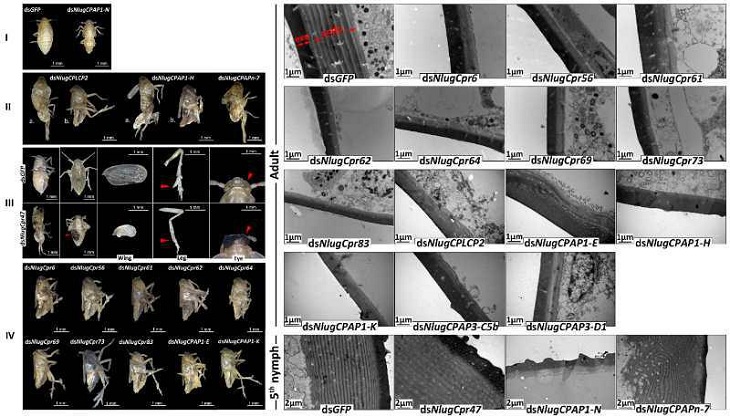On 30th April, 2018, a research article entitled “A comprehensive omics analysis and functional survey of cuticular proteins in the brown planthopper” was published on PNAS (http://www.pnas.org/content/early/2018/04/25/1716951115). This paper comprehensively reports the full complement of cuticular proteins and their functions in an insect for the first time. PhD student Pan Penglu and Ye Yuxuan, who come from the Institute of Insect Sciences, College of Agriculture and Biotechnology, Zhejiang University, are co-first authors of the article. Prof. Zhang Chuanxi is the corresponding author.
The cuticle plays crucial roles in the normal growth and development of insects. It has the characteristics of flexibility, elasticity, rigidity, impermeability, and can be used as the target for pesticides. So the insect cuticle has been being studied by researchers for more than a hundred year. The cuticular proteins (CPs) are the major components of insect cuticle, and they are also the most important components to determine the characteristics of insect cuticle. However, there are a lot of difficulties in studying the insect CPs integrally because of the diversity, large quantity (the CPs usually account for >1% of the total number of insect proteins) and complexity in temporal and spatial expression patterns. Previous studies on cuticular proteins were scattered and limited within several CPs of an insect, and no comprehensive understanding of cuticular proteins in an insect has been revealed yet.
In this research, comprehensive large-scale technologies were used to study the full complement of CPs and their functions in the brown planthopper (BPH), which is one of the most destructive insect pest through Asia. The concept of CP-ome (insect Cuticular Protein-ome) was firstly proposed, and the genomic, transcriptomic, proteomic, expression patterns and functional analysis information of CPome in one insect species were reported. This study identified new insect cuticular protein families, revealed that 32 CPs were essential for BPH normal development or egg production, and demonstrated the redundant and complementary functions of CPs. The results greatly enriched the understanding of insect cuticular proteins in this field; the findings may furthermore stimulate the design and development of novel insecticides specifically targeting cuticle proteins.
Both the corresponding author and the first author come from Zhejiang University. This work was supported by the National Natural Science Foundation of China (31630057 and 31471765).
(Institute of Insect Sciences)


